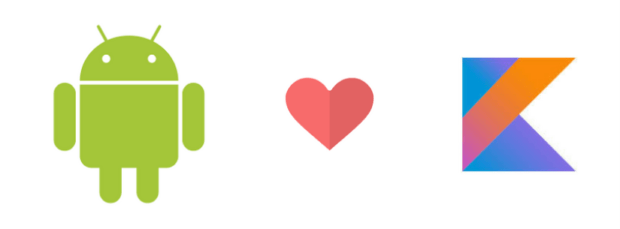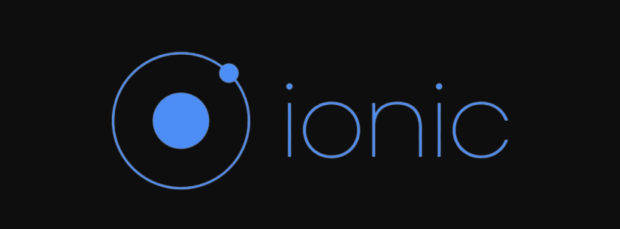The rapidly evolving realm of mobile technology significantly shapes how we communicate, work, and enjoy our leisure time. As the global mobile app market continues its upward trajectory, developers constantly seek innovative and enhanced frameworks to stay ahead of trends and create compelling applications that captivate users. By 2025, the landscape of mobile app development has experienced remarkable transformation, with leading frameworks differing substantially from those dominant only a few years prior.
Today’s top mobile app development frameworks have evolved to accommodate the ever-changing requirements of developers operating in this fiercely competitive sector. These advancements enable the creation of applications characterized by exceptional performance, seamless updates, and refined user experiences. Driven by technological innovations—such as enhanced processing capabilities and improved connectivity—and strategic business priorities, including shorter development cycles and robust market positioning, these adaptive frameworks empower developers to achieve new levels of efficiency and user satisfaction.
This article explores the ecosystem of leading mobile app development frameworks as of 2025, highlighting their unique strengths and functionalities while analyzing their influence on the continually shifting app development landscape. From flexible cross-platform frameworks designed to reach extensive user bases to groundbreaking technologies incorporating powerful artificial intelligence, these tools fundamentally reshape how mobile applications are conceived, developed, and experienced.
#1 React Native
In the realm of mobile app development, React Native has emerged as a preeminent framework, gaining substantial recognition for its prowess in expediting the creation of cross-platform applications. Having been unveiled by Facebook in 2015, React Native harnesses the power of the widely acclaimed JavaScript library, React.js—commonly employed in the construction of web applications—ultimately extending its capabilities to encompass mobile app development. Consequently, this allows developers to architect native mobile applications for both iOS and Android platforms, utilizing a singular codebase.
The sheer potency of React Native is encapsulated in its provision of a cross-platform solution, thereby enabling developers to transfer a considerable chunk of their code between iOS and Android applications. This feat not only diminishes development duration and expenses, but also renders the processes of maintenance and updating markedly more straightforward. Hence, developers can devote their energies to devising a fluid user experience that transcends devices, unburdened by the convolutions of platform-specific coding.
Yet another merit of React Native stems from its reliance on JavaScript as the principal programming language. As one of the most extensively utilized and adaptable programming languages, JavaScript’s ubiquity renders React Native increasingly accessible to a diverse array of developers. Moreover, the employment of JavaScript—rather than platform-dependent languages like Objective-C or Java—may contribute to a reduction in bug occurrences when juxtaposed with alternative cross-platform development options, such as PhoneGap.

#2 Kotlin (Android)
In the realm of Android app development, a revolutionary shift transpired with the introduction of Kotlin—a statically typed programming language meticulously crafted by JetBrains in 2010. Kotlin, conceptualized as a robust alternative to Java, operates seamlessly on the Java Virtual Machine (JVM) and possesses the versatility to be compiled into JavaScript source code or harnessed through the LLVM compiler infrastructure. With its primary focus on providing an avant-garde, eloquent, and secure language for Android app development, Kotlin has undoubtedly left an indelible mark.
As the years rolled by, Kotlin’s fame skyrocketed, capturing the keen attention of tech behemoth Google. Consequently, Google unveiled first-class support for Kotlin within Android Studio 3.0, effectively catapulting Kotlin to the exalted status of the go-to language for Android app development. In a swift and strategic response to this burgeoning interest, JetBrains expedited the release of versions 2.3 and 2.4 of their IDE plugin, synchronizing with Google’s groundbreaking announcement at Google I/O 2018.
Kotlin boasts an array of significant advantages, such as:
A succinct syntax that empowers developers to craft code with fewer lines, yet achieve the same functionality as Java. This lean approach not only enhances code legibility but also curtails the propensity for bugs and errors, thereby streamlining the development process.
Enhanced safety measures, including nullability checks, designed to thwart the dreaded null pointer exceptions—prevalent culprits behind Java application crashes. Kotlin’s integration of these safety mechanisms equips developers with the tools to build more dependable and stable Android applications.
Effortless interoperability with Java, enabling developers to utilize pre-existing Java libraries and frameworks sans modification. This compatibility paves the way for a smooth transition for developers well-versed in Java, simplifying the adoption of Kotlin in their projects.

#3 Flutter
Undeniably, Flutter has carved a niche for itself within the realm of mobile app development, captivating the attention of developers through its remarkable ability to generate native applications for iOS and Android, all from a singular codebase. A brainchild of Google, this ingenious framework capitalizes on the Dart programming language to craft high-performance, visually striking apps that seamlessly operate on diverse platforms.
Flutter’s exceptional characteristics, setting it apart from other cross-platform frameworks, are delineated below:
Foremost, its proprietary high-performance graphics engine empowers Flutter to render apps, bestowing a consistent appearance and user experience across platforms, while simultaneously guaranteeing that applications operate with utmost efficiency on an extensive range of devices.
Another remarkable facet of Flutter is its stateful Hot Reload feature, which enables developers to instantaneously witness the ramifications of their code modifications without necessitating an application restart or a complete rebuild. This feature accelerates development, facilitating rapid iteration and empowering developers to refine their apps and address issues as they emerge.
Moreover, Flutter is equipped with a bountiful collection of pre-constructed widgets, designed to assist developers in assembling complex, responsive user interfaces. These versatile widgets are modifiable and expandable, allowing developers to easily adapt them to cater to their distinct needs and design prerequisites.

#4 Xamarin
Encompassing a plethora of platforms—such as iOS, Android, and Windows—Xamarin emerges as a formidable cross-platform mobile development framework. By harnessing the power of Microsoft’s dynamic programming language, C#, Xamarin empowers developers to pen code just once, then deploy it across multiple platforms, becoming an increasingly prevalent choice among those in pursuit of a reliable, efficient solution to conjure up mobile applications for manifold platforms simultaneously.
In 2016, Microsoft seized the opportunity to acquire Xamarin Inc., the company responsible for developing the framework. Even before this strategic acquisition, Xamarin had already ensconced itself in the app development ecosystem as the go-to solution for industry behemoths like eBay, Netflix, and Salesforce, highlighting its aptitude for underpinning large-scale, high-performance applications.
Xamarin’s core strength?
1. Enabling developers to share a vast chunk of their codebase across diverse platforms, thereby shortening development time and engendering more consistent app behavior. This remarkable feat is achieved through the Mono runtime, a cross-platform incarnation of the .NET framework that guarantees apps crafted with Xamarin can run seamlessly on an array of operating systems with minimal platform-specific code.
2. Adding to Xamarin’s allure is its profound integration with Microsoft’s development ecosystem, epitomized by tools like Visual Studio. This union furnishes developers with a robust, familiar toolkit for building, testing, and deploying mobile applications. Complementing this, Xamarin’s extensive libraries and APIs simplify the task of incorporating platform-specific features and functionality into applications.
3. The cross-platform development process is further streamlined by the Xamarin Forms component of the Xamarin framework, which enables developers to construct common user interfaces (UI) for their apps. By leveraging a single, shared UI codebase, developers can maintain a consistent look and feel throughout their applications, while still reserving the option to customize platform-specific UI elements when deemed necessary.

#5 NativeScript
NativeScript, an avant-garde open-source framework, paves the way for the construction of indigenous mobile applications, utilizing renowned web technologies such as JavaScript, CSS, and HTML. Simplifying the process, NativeScript facilitates the creation of cross-platform apps compatible with iOS, Android, and Windows, all without demanding extensive platform-specific expertise.
A noteworthy characteristic of NativeScript is its prowess in granting unmitigated access to native APIs. Consequently, developers can harness native platform features within their apps, made possible through a cutting-edge JavaScript bridge that orchestrates seamless communication between native platforms and JavaScript code. This results in a harmonious integration with high-performance execution.
Furthermore, NativeScript seamlessly integrates with esteemed front-end frameworks like Angular and Vue.js, presenting developers with the prerogative to employ their favored frameworks in application development. This versatility empowers developers to operate within their comfort zone and maximize the potential of their selected frameworks.
#6 Ionic
With the help of robust mobile SDKs like Ionic, developers can create cross-platform, hybrid applications that use HTML, CSS, and JavaScript. Ionic is a framework built on top of Angular that was developed in 2013 by Max Lynch (the man behind PhoneGap) and Adam Bradley. It provides a simplified and effective development environment. Ionic is used by some of the biggest businesses in the world to build their applications for iOS and Android, including Netflix, Starbucks, and Slack.
Ionic’s key attributes include:
It is an integration with Apache Cordova that allows programmers to use JavaScript to access native device APIs. The development of feature-rich apps that make use of the capabilities of native device functionality is made possible by this seamless connection. Additionally, Ionic has built-in internationalization (i18n) support, which makes it simple for developers to translate their apps into different languages.
Ionic’s large collection of third-party plugins and integrated gesture support, powered by HammerJS or jQuery Mobile, streamline the development process and improve the user experience by providing fluid interface navigation. Users may now carry out actions like expanding photographs without having to touch repeatedly thanks to this.
The ‘ionic serve’ command is another feature of the Ionic CLI that allows developers to work offline and yet make use of live reload features. The ‘–livereload’ switch allows developers to quickly see the impact of their changes after saving them, accelerating the development process and assuring a more effective workflow.

Mobile app development frameworks will continue to evolve and innovate
The future of app development is significantly influenced by mobile app development frameworks. New frameworks will appear as the market develops, and existing ones will continue to innovate and evolve, giving developers a wide range of options for their projects. The most popular frameworks will upgrade their integration with crucial development tools including build systems, test runners, and debuggers in addition to adapting to accommodate new platforms and languages.
Mobile app development frameworks are always evolving and innovating, enabling developers to build better, more effective, and feature-rich apps for a variety of devices. Developers may employ the best tools for their projects by remaining current on the most recent improvements in framework technology, which will eventually result in higher-quality apps and better user experiences.
Conclusion
To navigate the ever-evolving tech landscape, staying informed about mobile app development trends is essential. We hope this guide to 2025’s leading frameworks has equipped you with insights to help you select the right tools for your next project. While the future of mobile development remains unpredictable, one thing is certain: new frameworks will continue to emerge, offering fresh possibilities for innovation. Whether you’re gearing up for a new build or simply exploring what’s next, keep an eye on these standout frameworks—and stay tuned to the pulse of this dynamic industry.
Are you prepared to realize your concept? Eventyr is on hand to assist. To build a smooth mobile app experience according to your idea, our highly skilled professional team will work under your direction. Please contact us if you would like further details, and let’s work together to make your concept a reality!






